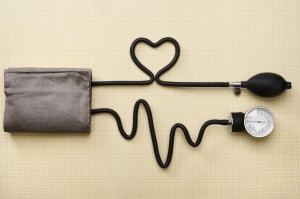 It is not uncommon for individuals with hemophilia to also develop high blood pressure, also called hypertension, later in life. Unhealthy eating habits coupled with inactivity can be cause for individuals to develop high blood pressure. Often times, there are no symptoms of high blood pressure, so one may not even know they have it. High blood pressure can lead to an increased risk for developing heart disease and an increased risk for having a stroke.
It is not uncommon for individuals with hemophilia to also develop high blood pressure, also called hypertension, later in life. Unhealthy eating habits coupled with inactivity can be cause for individuals to develop high blood pressure. Often times, there are no symptoms of high blood pressure, so one may not even know they have it. High blood pressure can lead to an increased risk for developing heart disease and an increased risk for having a stroke.
Blood pressure is the measure of the force of your blood through your arteries. It measures the systolic pressure (the top number), the pressure as the heart pumps your blood or beats, over the diastolic pressure (the bottom number), the pressure when your heart is resting between beats. The unit of measurement is in millimeters of mercury which is abbreviated mmHg.
What is a normal blood pressure?
|
Blood Pressure Levels * |
|
|
Normal |
Systolic: less than 120 mmHg Diastolic: less than 80 mmHg |
|
At risk (pre-hypertension) |
Systolic: 120-139 mmHg Diastolic: 80-89 mmHg |
|
High |
Systolic: 140 mmHg or higher Diastolic: 90 mmHg or higher |
*taken from www.cdc.gov
What kinds of things can you do to lower your risk of developing high blood pressure?
- Eat a healthy diet. A healthy diet is one that emphasizes a variety of fruits, vegetables, whole grains, and fat-free or low-fat milk and milk products. It includes lean meats, poultry, fish, beans, eggs, and nuts and is low in saturated fats, trans- fats, cholesterol, salt (sodium), and added sugars. Try to avoid or cut down on added salt in your diet. Keep in mind that pre-packaged and convenience foods often contain large amounts of salt (sodium.)
Â
- Be physically active! Healthy bodies bleed less and have fewer joint problems. Activity also helps lower blood pressure. Find an activity that you enjoy doing and make it a regular part of your daily routine. It can be as simple as walking. Just 30 minutes of moderate exercise each day will help keep your weight in check and your blood pressure down.
- Maintain a healthy weight.  Losing weight, even just a few pounds, can actually help to lower your blood pressure. Individuals who are at a healthy weight have a lower risk of high blood pressure.
- Don’t Smoke! Smoking not only puts you at risk for other diseases such as lung cancer and emphysema, it also damages your blood vessels and can lead to high blood pressure and stroke.
It is important to start developing good habits at an early age. Offer healthy foods to kids and help them learn to make good food choices. Start making physical activity a part of everyday life. Be a good role model and exercise or play active games with your kids. Don’t smoke and talk to children about the dangers associated with smoking. Making healthy choices related to physical activity and nutrition will not only help lower your risk of high blood pressure but also many other diseases and can also help reduce the number of bleeds you may experience.
Be sure to have your blood pressure checked at your next visit to your HTC or doctor. Ask what your blood pressure is and write it down. Keep track of your blood pressure. Remember high blood
pressure often has no symptoms. Discuss any risk factors you may have for high blood pressure with your care provider and get started today making healthy choices and living well!



